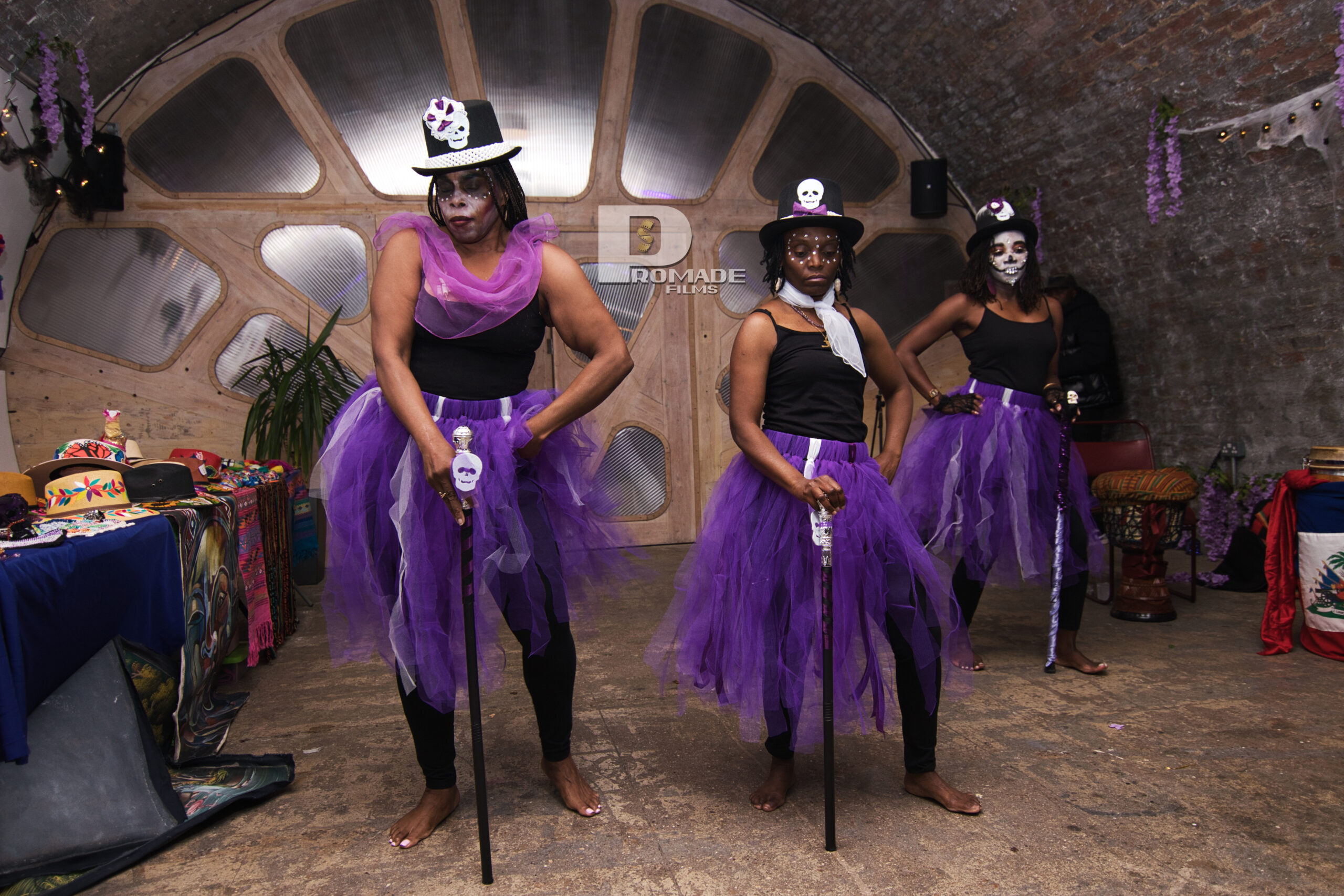Title: The Difference Dance of Haitian Gede and the Lwas They Represent
fetgede 2023

Introduction
Haitian Vodou, a rich and intricate spiritual tradition, is a fusion of West African, indigenous Taíno, and French influences that has evolved over centuries. Central to Vodou practice is the veneration of spirits known as Lwas. These Lwas are revered and celebrated through various rituals and ceremonies, and one of the most distinctive and captivating aspects of this practice is the dance of the Gede. In this blog post, we will delve into the difference between the dance of the Haitian Gede and the Lwas they represent.
Understanding the Lwas
Before we explore the dance of the Gede, it’s essential to understand the Lwas themselves. In Vodou, Lwas are intermediaries between the human world and the divine. They are powerful spirits, each with their unique personality, preferences, and domains. The Gede, a group of Lwas associated with death, ancestors, and the afterlife, play a particularly significant role in Haitian Vodou.
The Gede Lwas
The Gede are a diverse group of spirits who encompass both male and female energies. They are often invoked to help with healing, protection, and guidance. Each Gede spirit has its distinct personality and characteristics, and the dance of the Gede reflects the specific attributes of the Lwas involved.
The Dance of the Gede
The Gede dance is a vibrant and lively expression of the Gede spirits’ energy and essence. It is a central element in Haitian Vodou ceremonies, particularly during the Feast of the Dead, known as Fet Gede. The dance of the Gede is characterized by a unique blend of sensuality, humor, and a connection to the afterlife.
1. Sensuality: The Gede spirits are known for their love of sensuality and indulgence. Their dance is a celebration of the pleasures of life, and it often includes suggestive movements and gestures that symbolize their lust for life.
2. Humour: The Gede spirits are known for their mischievous and playful nature. The dance of the Gede is often filled with humour, including playful interactions between participants, comical mimicry, and sometimes even cross-dressing to channel the androgynous nature of some Gede Lwas.
3. Connection to the Afterlife: While the Gede spirits are associated with death and the afterlife, their dance also serves as a connection between the living and the deceased. Through dance, song, and offerings, Vodou practitioners pay homage to their ancestors and seek the Gede’s guidance.
Individual Gede spirits have their unique dance styles and preferences. For example, Baron Samedi, one of the most well-known Gede Lwas, is associated with death, resurrection, and the cemetery. His dance often includes movements reminiscent of a skeletal figure, and participants may wear skull masks and top hats in homage to him.
Conclusion
The dance of the Gede in Haitian Vodou is a captivating and unique expression of the Gede spirits’ personalities and their connection to the afterlife. It is a celebration of life, sensuality, and humour, providing a bridge between the living and the deceased. By understanding the differences in the dance of various Gede spirits, we gain insight into the complexity and richness of Haitian Vodou and its vibrant spiritual traditions. The dance of the Gede is a testament to the enduring cultural and spiritual significance of these Lwas in Haitian society, and it continues to be a powerful and evocative element of Vodou ceremonies today.